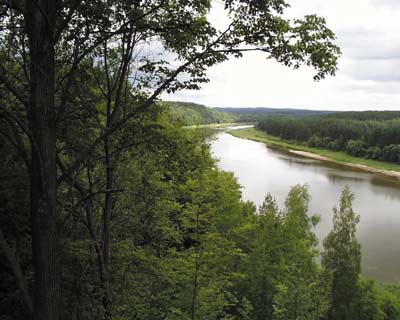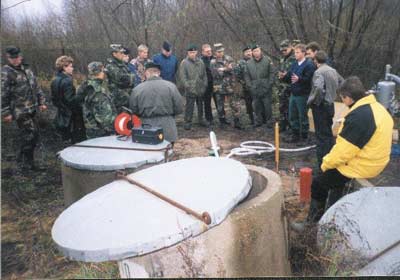Danish - Lithuanian Environmental Co-operation 1991-2000
Chapter 10
Institutional strengthening
Some projects have the primary objective to strengthen the set-up and capacity of Lithuanian environmental institutions. These projects range from small study tours for public servants to Denmark to medium size projects targeted at transposition effort for specific EUrequirements (such as collection of environmental information and reporting) and large scale projects targeted at major challenges and broad areas.
Even if it is difficult to evaluate the nontangible benefits of a given project, one criterion to be applied is that there should be transfer of knowledge, which is found useful and valuable by the recipient of the project.
In this sense, all successful projects should contribute to the strengthening of the persons and institutions involved in the projects. Most of the projects supported by the DANCEE programme contain components, which, more or less explicitly, are targeted at strengthening the participating persons and/or institutions.
Some projects have the primary objective to strengthen the set-up and capacity of Lithuanian environmental institutions.

The DANCEE programme has supported several projects with activities that will strengthen the management and recreational use of the reserves along the Nemunas River and its tributaries.
These projects range from small study tours for public servants to Denmark over medium size projects targeted at transposition effort for specific EU-requirements, such as collection of environmental information and reporting and large-scale projects targeted at major challenges and broad areas.

In relation to soil and ground-water contamination caused by the former Soviet military bases DANCEE has supported a range of activities, primarily as capacitybuilding entailing demonstration of clean-up and remediation techniques.
Capacitybuilding
In 1997, a project targeted at the transposition of the IPPC-directive (Integrated Pollution Prevention and Control) was launched with Danish support. This project (Waste and IPPC approximation project) supported the Ministry in the development of required legislation, National strategy for approximation of IPPC directive, Training programme and assisted in the implementation of training activities.
Another large project, which focused specifically on the Lithuanian capacity to perform inspection visits to industries for which environmental permits are required and to enforce the environmental legislation, was initiated in 1999. In the first stages of this project, an electronic database was created in order to keep track of all needed information for efficient industrial inspections in three pilot Regional Environmental Departments. In this first phase, the challenge has been to transform a similar Danish EDP database into a useful Lithuanian version and to incorporate specific Lithuanian requirements into the tool. It is planned that the full project shall provide all regional departments with similar tools. The project is a good example of the step-wise approach, which is often applied in complicated projects.
See the following project descriptions:
Waste Management in Kaunas, page 34 State Park Institutional Development, page 38